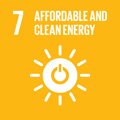- Docente: Marco Lorenzini
- Credits: 6
- SSD: ING-IND/10
- Language: Italian
- Teaching Mode: In-person learning (entirely or partially)
- Campus: Forli
-
Corso:
Second cycle degree programme (LM) in
Mechanical Engineering (cod. 8771)
Also valid for Second cycle degree programme (LM) in Mechanical Engineering (cod. 8771)
Learning outcomes
The student is able to model basic phenomena of fluid dynamics and heat transfer through the use of numerical and analytical techniques and knows the thermal control logics of most common use in the industrial and civil sectors.
Course contents
Notice: the English version of the course is sketchy because it will be held in Italian anyway, so the following is only aimed at giving a potential foreign student a general impression of the course prior to choosing whether to enlist for the Italian degree in 'Laurea Magistrale inIngegneria Meccanica'. For further details, please e-mail the instructor.
Rehearsal of thermodynamic concepts: the second law and Entropy. Exergy. Exergy and thermoeconomical analysis of thermodynamic systems (heat exchangers, power cycles). Integral transport equation: mass, momentum, energy. Application of integral equations to stead and unsteady engineering problems. Heat pumps: types, uses, characteristic parameters, thermodynamic analysis. Control of processes and plants.
Readings/Bibliography
Course notes supplied by the teacher;
Metodi termodinamici per l’uso efficiente delle risorse energetiche -V.Verda, E. Guelpa. Bologna : Esculapio, 2015
Tecnica del Freddo - G. Grazzini, A. Milazzo. Bologna: Esculapio, 2017
The Exergy Method of Thermal Plant Analysis, T. J. Kotas, Exergon Publishing Company, 2012
Thermodynamik, H.D. Baher, S. Kabelac, Springer, 2009
Teaching methods
Numerical examples where theoretical principles are applied; use of thermodynamic tables and charts to solve problems.
Assessment methods
Oral examination for which registration on AlmaEsami is mandatory. The examination consists of two theoretical questions and one numerical exercise. Pocket calculator is needed, possible support material to solve the exercise is supplied by the examiner.
Teaching tools
Classroom lecture and exercises.
Office hours
See the website of Marco Lorenzini
SDGs

This teaching activity contributes to the achievement of the Sustainable Development Goals of the UN 2030 Agenda.
